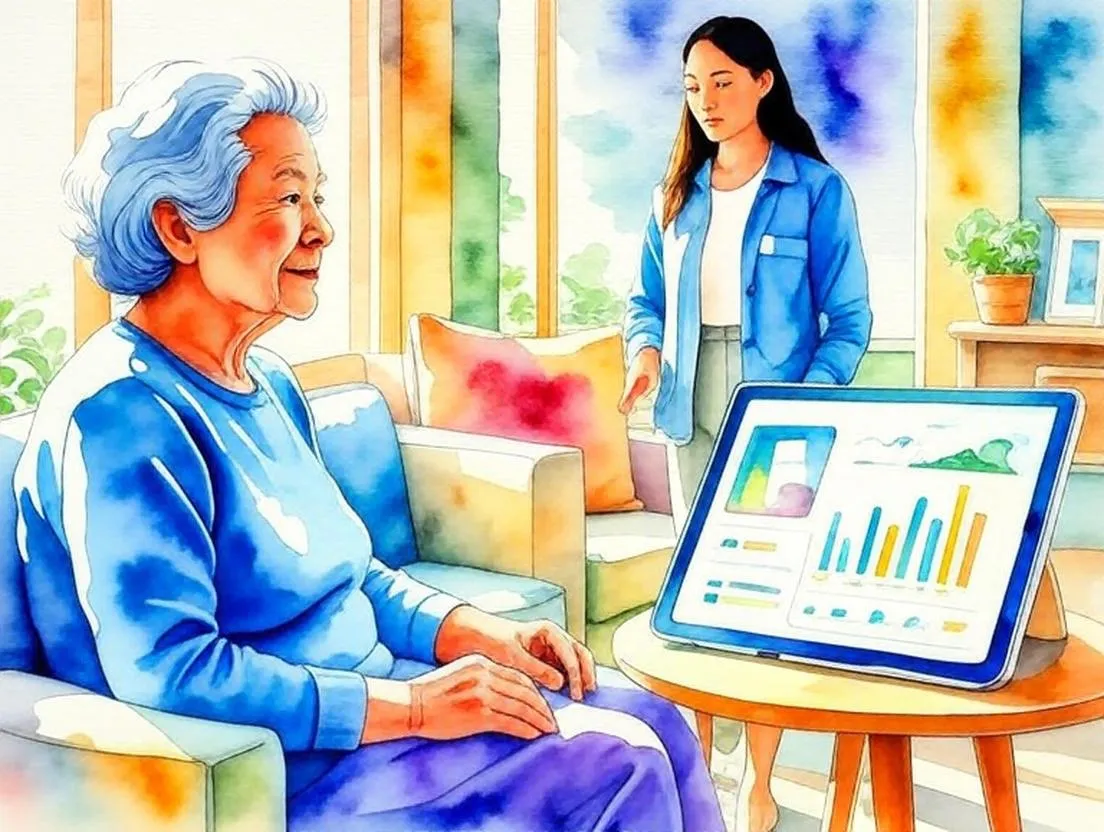
Future of Home Care
The Future of Home Care: Embracing Cutting-Edge Trends in In-Home Care for 2025
In today's fast-paced world, the home care industry is undergoing a seismic paradigm shift, driven by disruptive innovations and the unstoppable aging boom. As we navigate the post-pandemic era, families are increasingly seeking sustainable, personalized solutions for home care that empower seniors to age in place with dignity and independence. Whether you're exploring "home care" options for a loved one or diving into "in-home care" services, understanding these buzzworthy trends is key to unlocking the full potential of modern caregiving. Let's explore how AI-powered technologies, telehealth revolutions, and hospital-at-home models are redefining the landscape of home in 2025.
The Aging Population Boom: Fueling Demand for Personalized Home Care
The demographic tsunami is here: By 2030, one in five Americans will be 65 or older, skyrocketing the need for innovative home care solutions. This rapid aging boom isn't just a statistic—it's a call to action for families and providers alike. In states like Massachusetts, the population over 60 has surged 13% in recent years, outpacing younger demographics and amplifying the urgency for reliable in-home care.
Buzzword alert: This shift towards "empowered aging" means 75% of adults over 50 prefer to stay in their own homes, rejecting traditional nursing facilities in favor of holistic, community-based home care. As a result, the U.S. home care market, already valued at a staggering $286 billion in 2024, is exploding with growth opportunities, projecting a 22% surge in home patient volumes by 2034. If you're searching for "home health" services, now's the time to tap into this transformative wave, where personalized care plans integrate seamlessly with daily life for ultimate wellness optimization.
Workforce Revolution: Addressing the Caregiver Shortage with Smart Strategies
No conversation about home care trends is complete without tackling the elephant in the room: the workforce crisis. With an unprecedented 80% annual turnover rate among U.S. home care workers in 2024, providers are pivoting to game-changing retention tactics to bridge the gap. Stagnant wages—median hourly pay hovering at $16.72 nationally—have pushed many caregivers to other industries, but innovative agencies are countering this with competitive incentives and tech-driven efficiencies.
Enter the buzz: "Sustainable caregiving ecosystems" are emerging, where 59% of agencies report caregiver shortages as a top challenge, down slightly from last year thanks to evolving workforce management. In 2025, expect a 21% growth in home and personal care aide jobs, creating 8.9 million openings to support our silver tsunami. For those in the "home care" space, this means prioritizing operational excellence—70% of leaders see it as the greatest growth lever—through AI-optimized scheduling and payer diversification for long-term viability.
Tech Disruption: AI, Telehealth, and Hospital-at-Home Redefining In-Home Care
The real game-changer in 2025? Technology's meteoric rise in home care. Artificial intelligence is no longer sci-fi—53% of agency leaders view AI as a high-impact tool for streamlining operations and enhancing patient outcomes. From predictive analytics that forecast care needs to smart devices enabling remote patient monitoring, these cutting-edge solutions are empowering "proactive wellness" in the comfort of home.
Telehealth, the pandemic darling, continues its evolution: Medicare has extended virtual visits for home care through at least September 30, 2025, with hopes for permanent integration. Though usage dipped to 53% in 2024, the convenience of video calls is revolutionizing access, especially in rural areas bolstered by new federal programs like the $50 billion rural initiative.
And don't miss the hospital-at-home buzz: As of March 2025, 391 hospitals nationwide offer CMS-waived programs delivering acute care at home, with leaders like Mass General Brigham expanding to 70 beds. This "care anywhere" model not only cuts costs—home care remains half the price of nursing homes at $86,944 annually versus $173,375—but also boosts patient satisfaction through hyper-personalized, tech-infused experiences.
Regulatory Shifts and Market Opportunities: Navigating the New Normal in Home Care
Amid these innovations, regulatory trends are favoring agile home care agencies. Complex compliance requirements are steering families away from DIY caregiving towards professional "in home care" providers who handle the heavy lifting. With Medicaid covering 69% of long-term care spending, policy decisions are pivotal, including budget boosts like Massachusetts' $104 million increase to combat deficits.
The opportunity? M&A activity is heating up, with workforce stability defining deal success, and 64% of leaders eyeing market expansion. As chronic diseases rise alongside an aging population, the U.S. home care market is set for explosive growth, making 2025 the prime time to invest in resilient, tech-forward home health strategies.
Conclusion: Step Into the Future of Home Care Today
The home care revolution is here, blending human touch with AI-driven precision for a brighter, more accessible future in in-home care. Whether facing the caregiver crunch or leveraging telehealth breakthroughs, these trends underscore one truth: Home is where the heart—and the health—of tomorrow lies. If you're ready to explore top-tier "home care" services tailored to your needs, contact us today for a complimentary consultation. Let's co-create your empowered aging journey in 2025!
